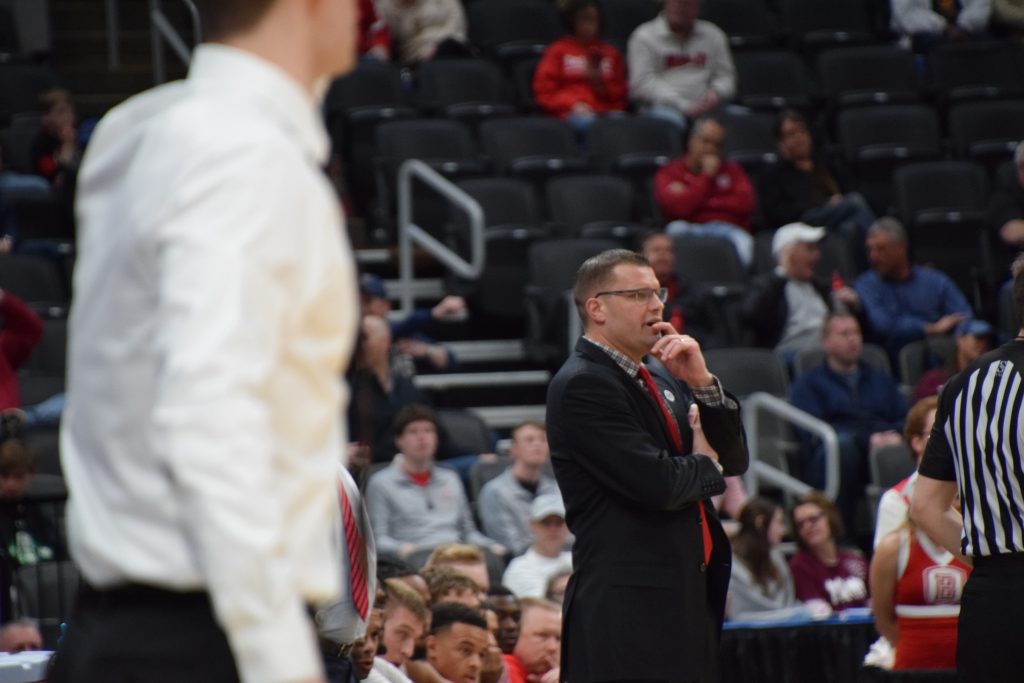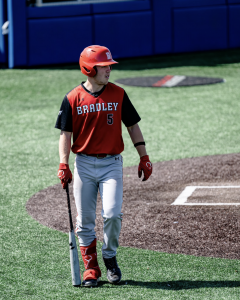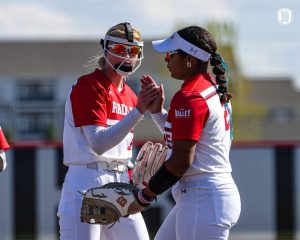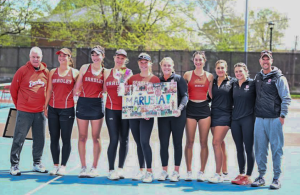
At about 2:15 p.m. on Wednesday afternoon, Bradley men’s basketball coach Brian Wardle’s cell phone rang.
“Here’s a recruit calling me now, but I’ll call him back,” Wardle said during an interview with The Scout over Zoom. “Can I text him real quick? Sorry.”
Wardle is rarely away from his phone these days, as he and the rest of the Bradley coaching staff work to fill five open scholarships on the team’s roster.
Those spots are left open due to the transfer of all but two guards on the Braves’ roster: Antonio Thomas, Kevin McAdoo, Terry Nolan Jr., Sean East II and Danya Kingsby. Add the all but certain departure of senior forward Elijah Childs, and there is a fair share of holes to fill.
Luckily for Bradley, there is also a fair share of possible replacements.
Over 1,360 of them, in fact.
As of Wednesday night, over 1.3 thousand NCAA Division I basketball players have entered their name in the transfer portal –– a shakeup of record proportions, triggered by the forthcoming passing of an immediate eligibility rule for players leaving their current schools. Add in that each player receives an extra year of eligibility due to COVID-19 and college basketball nearly has its equivalent to free agency.
“I’ve never been through a spring recruiting season like this before,” Wardle said. “My staff and I are working overtime right now, crazy hours, all day, all night; communicating, talking on the phone, selling Bradley, selling the city, selling the academics and obviously you talk about what our program has accomplished and what we want to get back to next year.”
So how on earth does Wardle narrow his sights with so many possible targets?
It starts by searching for specific criteria. Quantifiable factors such as experience, efficiency at the guard position and 3-point shooting are considered while sorting through names, but intangibles like toughness, leadership ability and overall character hold more weight as the recruiting process moves along.
“There’s certain specifics that we’ve really tried to be patient and dig into and make sure it lines up with our program and, more importantly, the guys we have coming back in that locker room,” Wardle said.
Once the staff identifies a player as a possible fit, they try to find a connection to the player — whether it be a high school, AAU or college coach. According to Wardle, this is a critical step in trying to establish a relationship with a recruit.
“It is hard to get involved with a kid out of a cold call,” Wardle said. “You want to have some kind of connection somehow. When you have that, you jump all over it.”
From there, the process moves into a step that can be likened to basketball speed dating.
“You ask real direct, quick questions, so you don’t waste their time and they don’t waste your time,” Wardle said. “A lot of these older kids know what they’re looking for, they’re older and they don’t want to waste time either.”
If interest is mutual, the courtship really begins, starting with some longer FaceTime or phone calls, followed by a formal “get-to-know-me” Zoom meeting. If that first call goes well, a second Zoom follows, featuring a presentation about the Bradley program, roster, academics and other things of that nature.
From that point on, the contact continues with consistent calls and meetings, until the player eventually comes to a decision. According to Wardle, the process can take anywhere between three to five weeks.
It’s a carefully crafted approach; a little slower than the one that Wardle and company used to land East, who Wardle described as his first “Zoom recruit,” out of the portal last spring.
“We’ve just been more patient in the process after having gone through it briefly in the spring and I think it’s working out well,” Wardle said. “Really get to know each other, more so than ever before because you’re never really going to have that in-person touch, which you can not ever replace, but you try to simulate the best through a Zoom.”
That process culminated on Wednesday afternoon with Bradley’s first transfer commit of the year in Mikey Howell, a 6-foot-3-inch graduate transfer point guard from the University of California San Diego.
The SoCal native checks a lot of boxes on Wardle’s recruiting checklist. Howell is the all-time leader in assists at UCSD, a career 46 percent shooter and will be one of the oldest players on Bradley’s roster this fall with four full seasons of college hoops under his belt.
For Wardle, getting to know Howell and others has been exciting as the team looks to add spark following a first-round exit in Arch Madness.
“I’ve been blown away by some young men that we’re recruiting,” Wardle said. “We’re excited about who we’re on and who we’ve been patient with and developed a relationship with right now. We’ll kind of see where it goes.”
As for further down the line, Wardle recognizes that the new NCAA transfer rules will present a challenge for him and other mid-major coaches.
Not only do schools from power six conferences already have a leg-up on schools like Bradley in terms of resources, but now coaches will have to work harder to prevent bigger schools from poaching their top talent from season to season.
Multiple Missouri Valley Conference schools have seen some of their top players depart, including Valparaiso star Javon Freeman-Liberty transferring to DePaul last offseason. More recently, former Drake guard Joseph Yesufu parlayed a great two-game stretch in March Madness into a transfer to Kansas, a perennial powerhouse.
“This spring though might be a little bit of a taste of maybe what could happen in the future, which makes it very difficult,” Wardle said. “You’ve got to re-recruit your own players every year anyway and it’s hard to keep everybody happy. It’s hard to keep 13 guys happy when you can only play five and you’ve got 200 minutes to play. If everybody can leave and play right away, time will tell where this will go.”
Above all, Wardle said he hopes it all works out in the players’ best interest.
“I do think it’s good for kids that know that their role might not be big at their current university and want a bigger role. And I totally respect that,” Wardle said. “Hopefully, it leads to young men and young women’s success in their sport, because I don’t think it’s healthy if kids are leaving every year and there’s no commitment or relationship really built.”
Ultimately, Wardle and his staff know what can come of those strong, four-year relationships: championship teams.
“I know our fans, they want to have relationships with our players and know who our roster is and see them grow and develop like they did with Darrell [Brown], Nate [Kennell], Koch [Bar] and DLO [Dwayne Lautier-Ogunleye] and all those guys, and Donte [Thomas] too,” Wardle said. “We hope that we can hang on to our guys as long as we can.”




